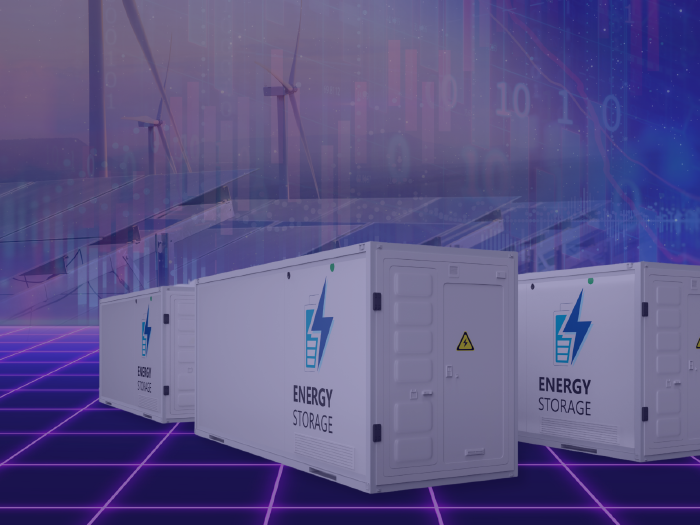Energy FAQs
Expand your knowledge and stay informed with our FAQs
Welcome to GridBeyond’s FAQs. At GridBeyond, we are passionate about driving the transition towards a sustainable and efficient energy future.
Explore our comprehensive repository addressing your inquiries regarding renewable energy, energy markets, and the evolving landscape of networked digital technology for the future. Delve into our energy FAQs, curated at the forefront of the energy transition.
The term “behind the meter” or BTM denotes the location of energy generation or storage systems concerning the point of energy consumption, typically within residential, commercial, or industrial premises. Devices installed on the customer’s side of the utility meter, such as rooftop solar, home batteries, and smart appliances, fall under this category.
BTM systems offer consumers greater autonomy over their energy usage, enabling them to reduce reliance on the grid, provide backup power during outages, and even contribute surplus energy back to the grid through mechanisms like net metering. By harnessing on-site generation and storage technologies, consumers can optimise energy utilisation, lower costs, and promote sustainability.
Conversely, technologies situated on the utility side of the meter, like large-scale batteries, are referred to as “front of the meter” (FTM). While BTM solutions empower individual consumers, front-of-the-meter technologies primarily serve grid-level operations, enhancing overall system resilience and efficiency.
The term “front of the meter” (FTM or FOTM) refers to infrastructure and facilities directly connected to the grid and typically owned and operated by utility companies or independent power producers. These facilities are situated “in front of the meter” because their output is measured and accounted for before it reaches the end consumer.
Front of the meter installations primarily encompass large-scale power generation facilities such as conventional power plants (coal, natural gas, nuclear), hydroelectric dams, wind farms, solar farms, and other utility-scale renewable energy projects.
On the grid, the supply of electric power must perfectly match demand. Balancing the grid is a critical process in ensuring the equilibrium between the supply and demand of electricity within the interconnected network of energy distribution.
Picture the grid as a vast, intricate web of energy, operating at a precise frequency. This frequency must be upheld consistently to facilitate the seamless flow of power across nodes within the network. Any deviation from this balance, where the energy supplied does not match the energy consumed, can disrupt the frequency, leading to potentially hazardous consequences.
When demand surpasses supply, grid operators face the challenge of preventing grid overload, which could result in severe damage to the system’s components. To mitigate this risk, utilities may resort to implementing rolling blackouts, effectively reducing the load on the grid. However, if the imbalance escalates beyond the operators’ ability to intervene promptly, automated safety mechanisms kick in, triggering widespread blackouts that may take considerable time to rectify.
Traditionally, utilities have relied on centralised power stations and peaker plants, often fuelled by fossil gas, to meet peak demand. However, the emergence of renewable energy sources and battery technologies provides cleaner alternatives for grid balancing. Additionally, the integration of smart equipment and appliances capable of adjusting their energy consumption can contribute to maintaining grid stability, especially when coordinated as distributed energy resources or virtual power plants.
Distributed energy resources (DERs) encompass a diverse array of assets scattered throughout communities, ranging from solar panels and batteries to backup generators and electric vehicles. Unlike traditional centralised power plants, DERs offer localised energy production and supply capabilities, enhancing grid flexibility and resilience.
As DER technologies continue to evolve, they play an increasingly pivotal role in shaping the future of decentralised, sustainable energy systems. In addition to generating electricity, DERs can include controllable devices like water heaters and appliances that can adjust their energy consumption to support grid stability.
The proliferation of DERs introduces new challenges and opportunities for grid management. While utilities often lack real-time visibility into DER outputs, advanced technologies such as DER management systems enable coordinated control and optimisation of these resources. Integrating DERs effectively requires robust infrastructure and regulatory frameworks to ensure reliability, efficiency, and equitable distribution of benefits across diverse stakeholders.
Capacity markets provide an additional incentive for developers of generating capacity (i.e., power plants or demand response providers) to make their capacity available to electric markets where price signals alone would not.
In contrast, in energy-only electricity markets, like the one used in Texas (ERCOT), generators and demand response providers rely on energy market price spikes during periods of shortage.
Capacity markets essentially pay resources for being available to meet peak electricity demand. Providers are paid on a kilowatt per year basis for the capacity that a power plant can generate or, in the case of demand response, the capacity of power that can be reduced.
Even in the best of circumstances, the grid will experience short term, temporary changes in overall capacity, e.g., when a power plant or transmission line goes out of service, or when there are inconsistencies in generation from more intermittent energy sources like wind or solar.
Ancillary services products address these short-term imbalances by dispatching resources within seconds or minutes. Demand response can act as an ancillary service that responds just as quickly as a power plant would, depending on the type of ancillary service required. Under ancillary service programs, energy users are paid to reduce demand to keep the grid operating within its usual frequency range.
Many organisations begin tackling energy costs with demand response because it creates a valuable revenue stream that can be reinvested to deliver even greater cost savings. But demand response offers a broad set of financial, operational, and environment benefits for participating facilities. While the specific demand response programs differ depending on the power network in which your business is located, generally, funds in exchange for reducing electricity demand when called upon.
In the energy sector, the term “curtailment” refers to the reduction of power production (“generation curtailment”) or – less frequently – power consumption (“load curtailment”) when there is too much electricity in the grid (generation curtailment) or when there is not enough power in the grid (load curtailment). Curtailment aims at lessening the stress on the grid at a given moment of the day. Most commonly, curtailment is associated with the reduction of infeed from renewable energy sources.
Frequency response services play a crucial role in safeguarding the integrity of the electrical grid by swiftly addressing deviations in frequency and maintaining system stability.
The frequency of an electrical system is a measure of the rate at which alternating current oscillates, typically measured in Hertz (Hz). In a well-functioning grid, the frequency remains relatively constant within a certain range, typically around 50 or 60 Hz, depending on the region. However, various factors such as changes in demand, sudden loss of generation capacity, or the integration of renewable energy sources like wind and solar power can cause deviations in frequency. These deviations, if left unaddressed, can lead to disruptions, equipment damage, or even blackouts.
Frequency response services are designed to mitigate these deviations and ensure grid stability. There are generally two types of frequency response services. Primary frequency response involves automatic and immediate actions to counteract sudden frequency deviations. This typically involves fast-acting resources such as spinning reserves, which are generators synchronized to the grid and ready to increase or decrease output rapidly in response to frequency changes. Secondary frequency response involves more deliberate and controlled interventions to restore frequency to its nominal value after primary measures have been initiated. These interventions may include adjustments in generation or demand through mechanisms like frequency containment reserves (FCR) or automatic generation control (AGC) systems.
Day-ahead trading is the market mechanism where electricity is bought and sold for delivery the following day. This trading occurs on organised electricity markets, also known as power exchanges or energy markets, where generators and consumers participate to purchase or sell electricity based on anticipated supply and demand conditions for the next day.
Participants in the day-ahead market submit bids indicating the quantity of electricity they are willing to buy or sell at various price levels. These bids are typically based on factors such as generation costs, fuel prices, transmission constraints, weather forecasts, and anticipated demand patterns. Market operators then use sophisticated algorithms to match supply bids with demand bids and determine the clearing price, which is the price at which the total quantity of electricity demanded equals the total quantity supplied. Once the clearing price is established, market participants whose bids are accepted receive or pay the clearing price for the electricity they buy or sell. This price is often used as a reference for settling financial transactions in the market. Additionally, grid operators use the day-ahead market results to develop schedules for the real-time operation of the grid the following day, ensuring that supply and demand are balanced and grid reliability is maintained.
Intraday trading in electricity is the buying and selling of electricity on short notice, typically within the same day of delivery. Unlike day-ahead trading, intraday trading allows market participants to adjust their electricity positions in response to real-time changes in supply and demand, unexpected generation outages, fluctuations in renewable energy output, or changes in consumption patterns.
Participants in the intraday market submit bids and offers for electricity delivery within specific time intervals, ranging from hours to minutes before the actual delivery time. These bids and offers reflect updated forecasts, operational constraints, and any new information impacting supply and demand dynamics. Market operators use sophisticated algorithms to match bids and offers and determine clearing prices for each intraday trading interval.
The ability to trade electricity intraday offers several advantages to market participants. It allows generators to optimise their production schedules, adjust output levels in response to grid conditions, and capitalise on price arbitrage opportunities. Retailers and traders can manage their energy positions more effectively, minimise imbalances, and reduce exposure to financial penalties associated with deviations from contracted quantities.







